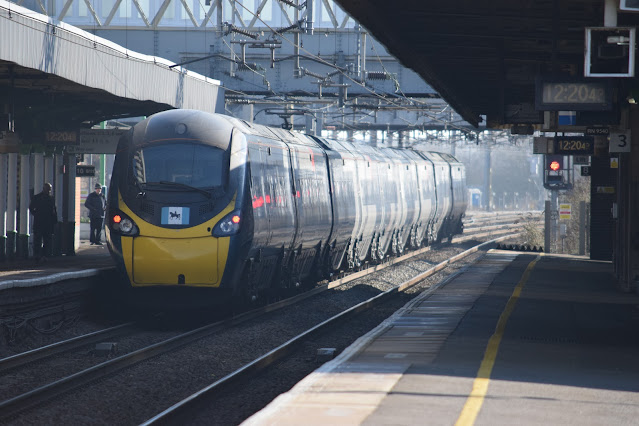The site of the former signalbox at Farnsfield [and any remaining foundations] lies in a thicket of tangled vegetation that hides its exact location, east of the old station house, north of the Farnsfield to Southwell Trail but south of the path to Blidworth. Gill Sarre of Farnsfield Local History Society (farnsfieldlhs.co.uk) has done some research on the box and its last signalman, John Robinson. Gill has kindly given me access to her story, which is self-explanatory and included here:
“New Archive Donation - Farnsfield Signalman’s Log Book
One of the visitors attending Mark Guy’s talk in June about
the history of the Southwell Trail, brought with him a rather special ‘find’.
It was a British Rail Train Register containing the Farnsfield signalman’s log
of trains passing both up and down the line between Blidworth and Kirklington
from 2nd December 1963 until the line closed, the last entry dated
25th February 1965. Gordon Butler had found the log book discarded
amongst rubbish when the railway station closed. He realised it was of interest and took it
home where he has kept it ever since. He
has now very kindly donated it to the Society for our archives. I was very pleased to be able to give him
some information about the man behind the book.
Each day’s entries were signed ‘J.B.Robinson’. John Bailey
Robinson was the Farnsfield signalman for many years. He was born in Farnsfield in 1902, the son of
a Carter called Bailey Robinson and his wife Kate. At the time of the 1921 census, he was
working as a Railway Porter for Midland Railway at Farnsfield. In the 1939
National Registration he is listed as Signalman and is living at Rose Cottage
on The Green with his parents, a younger sister and brother. He is also a Special Constable. In 1945 he
married Dorothy Hill. John and Dorothy
were well known in the village and still remembered by many long-time
residents. Dorothy taught at the school
and appears in many old school photographs and they were both actively involved
in the local scouts.
At the end of John’s final log entry, he wrote “Keep right
on to the end of the road. Keep right on to the end”. The end of an era indeed.”
I’m indebted to Gill and to the FLHS for telling me about the signalbox and allowing me to use the information in my blog. When we were last in the Plough, our local pub on Main Street, Gill showed me a picture on the wall in the bar that includes John Robinson. He is shown leaning on the bar itself after [hopefully] a local shooting party event.


















